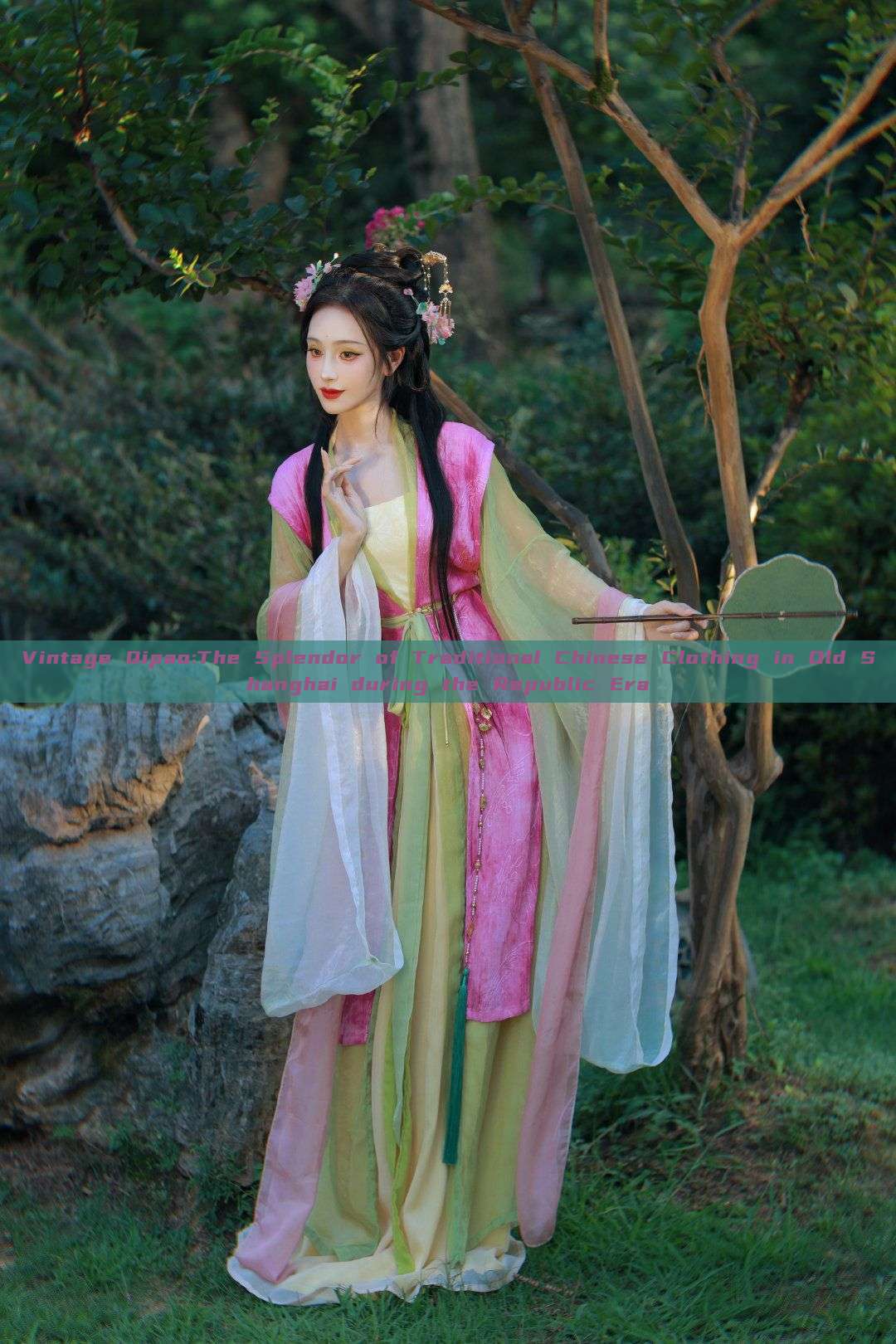Vintage Qipao:The Splendor of Traditional Chinese Clothing in Old Shanghai during the Republic Era
In the heart of Shanghai during the Republic of China era, a unique blend of traditional culture and modern influences was expressed through the attire of its citizens. Among the various styles that emerged during this period, the qipao—a traditional Chinese women's garment—stood out as a symbol of elegance and cultural continuity.

The qipao, often referred to as the "Chinese cheongsam," was a garment that underwent a transformation during the Republic era. It was not just a piece of clothing; it was an embodiment of a woman's identity, her status, and her cultural heritage. The design of the qipao, with its intricate patterns and vibrant colors, reflected the intricate nature of Chinese culture itself.
In Shanghai, during the early 20th century, the qipao underwent a fusion of traditional elements with modern influences. The design became more streamlined and fitted to the body, while retaining its traditional elegance and beauty. The use of vibrant colors and intricate patterns was combined with modern fashion trends, creating a unique style that was both traditional and modern.
The qipao was often worn by women of all ages, from the wealthy society ladies to the common women in the streets. It was a versatile garment that could be worn for various occasions, from formal events to everyday wear. The design of the qipao was tailored to suit different lifestyles and tastes, making it a popular choice for women who wanted to express their individuality through their attire.
The intricate patterns and vibrant colors of the qipao were often inspired by nature and traditional Chinese culture. Patterns such as flowers, birds, and clouds were commonly used, symbolizing beauty, harmony, and good luck. The use of these patterns not only added visual interest to the garment but also carried deep cultural significance.
The qipao also reflected the changing social landscape of Shanghai during the Republic era. As the city grew and evolved, the qipao underwent changes to adapt to new fashion trends and social norms. However, the traditional elements were always retained, ensuring that the qipao remained a symbol of Chinese culture and heritage.
Today, the qipao has made a comeback as a symbol of heritage and tradition. It is worn by women across the globe who appreciate its beauty and cultural significance. The qipao has also been adapted to suit modern lifestyles and fashion trends, making it more wearable and accessible to a wider audience.
Looking back at the history of the qipao in Shanghai during the Republic era, we see a garment that was not just a piece of clothing but a symbol of cultural continuity and pride. The qipao represents a blend of traditional Chinese culture with modern influences, creating a unique style that is both timeless and relevant. It is a testament to the resilience and adaptability of Chinese culture, which has managed to survive and thrive despite changing times and social landscapes.
The qipao will continue to be a symbol of Chinese culture and heritage, representing a rich history that dates back centuries. As we celebrate its beauty and uniqueness, we also celebrate the cultural continuity and pride that it represents. The qipao is not just a garment; it is a story of a culture, a history, and a legacy that will continue to inspire generations to come.

 Previous Post
Previous Post

